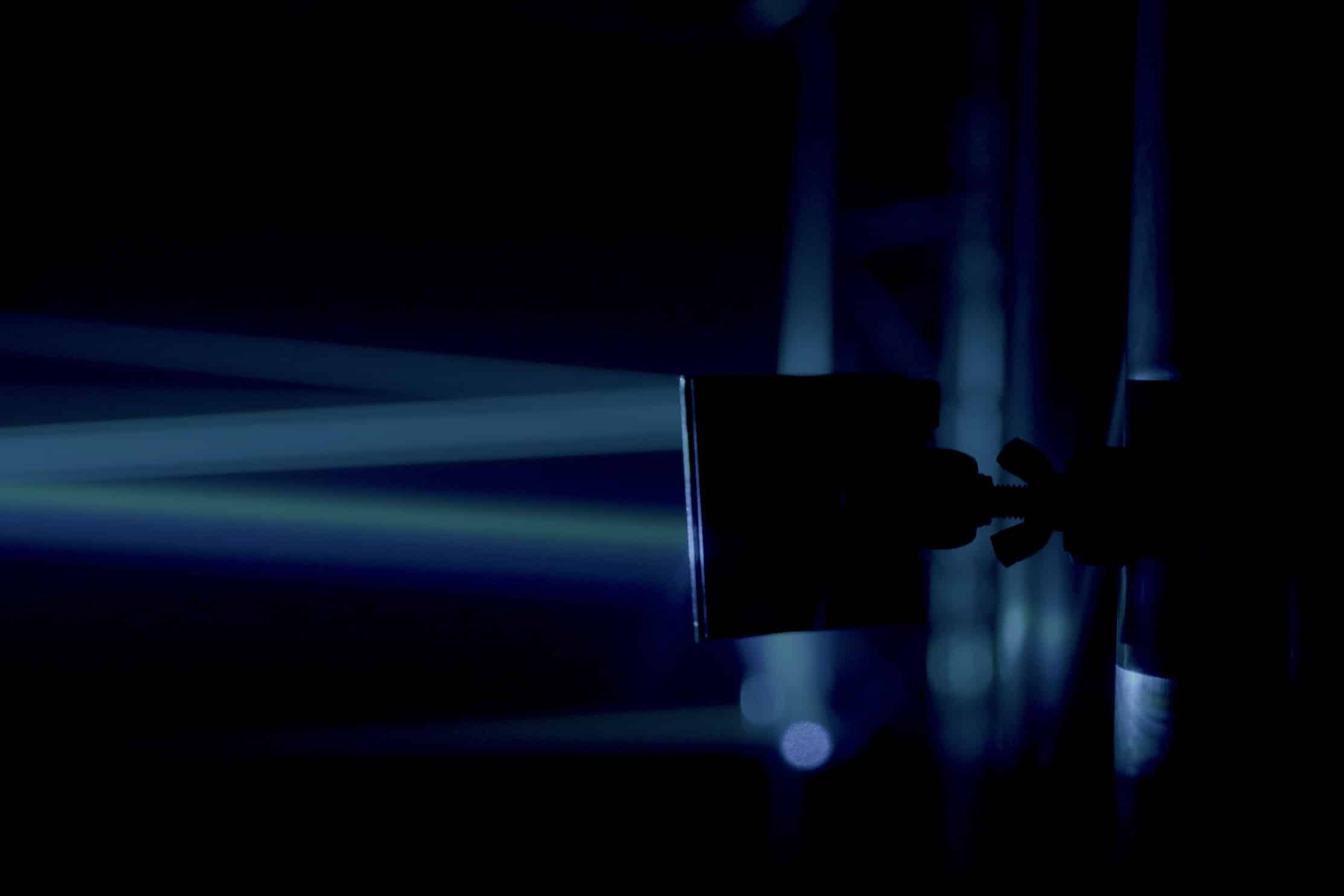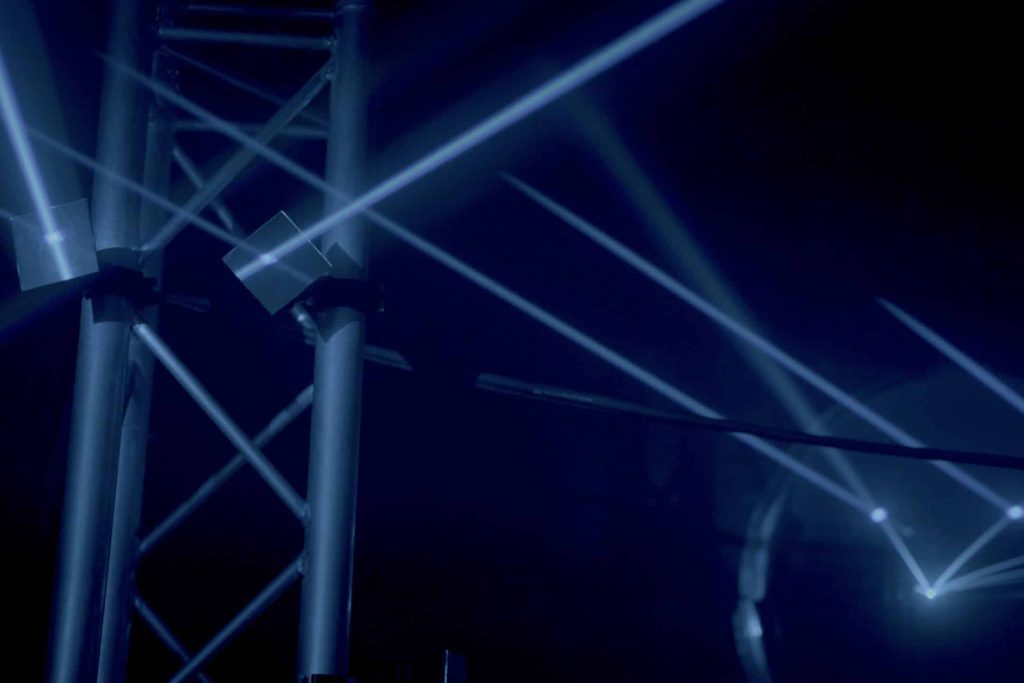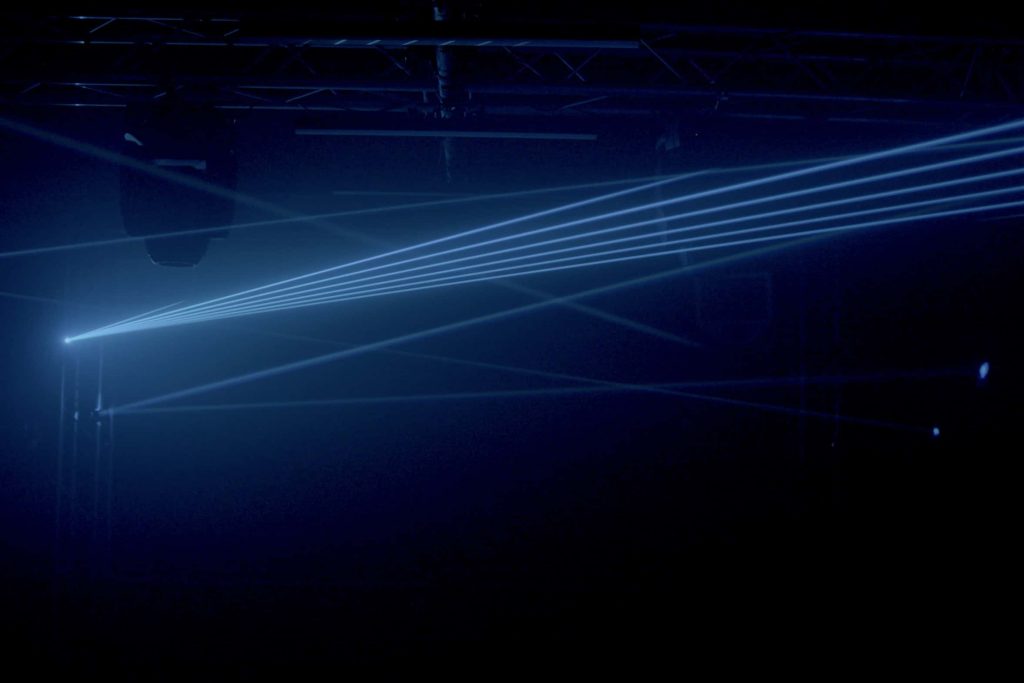
Caught up in the Web
For the new club season, OOST commissioned Ian Michel to rethink the visual identity of the upstairs room. After two months of conceptualizing, 3D-modeling, fixture patching and installing, the intimate space is now home to an engulfing network of lasers, mirrors and custom-made parts. Ian explains how it came to be.
Words by Ian Michel & Kos van Erp / Video by Willem van Oosterom
The case can be made that plenty of club innovations are contrived outside the club environment. Nightclub lighting functioned to replace the visual appeal of traditional live shows, the term ‘disc jockey’ stems from 1930s radio culture and likewise on a localized scale, the idea for a laser web, net, array – whatever you’d like to dub it – was born outside the context of an OOST club night.
Ian: ‘’It was very much an idea that was propelled by my interest in creating an installation in general and then later adapted to a club context, as my interest in stage design and light production piqued. Recently I was very much inspired by artists whose basis of art was innovating, reinventing, warping complex technical and mechanical processes to create something beautiful. For reference, I was very much interested in Issey Miyake as an innovator of textile design, Daniel Rozin for his mechanical mirroring installations and Janne Schimmel for his mutilation of video game consoles into interactive sculptures a.o. I wanted to create something that took an existing piece of technology or physics-based concept and use it in the context of light production. There were a couple other ideas that I was workshopping alongside OOST, but it was clear to see that the laser array was going to be the effectful and realistic to realize with my current skill set. For context: my background is in Engineering.’’

‘’The fundamental concept behind the laser array was reflection. Taking a source laser point projection that, through the use of a (at the time) theoretical mirror fixture, would reflect the beam to the next fixture and the next, creating a bending laser net throughout the club. Similar to what may have been seen in a Mission impossible movie. This required two things: the design and fabrication of the mirror fixture, and the programming and installation of the laser.’’
‘’The fundamental design concept behind the system of reflections was to create a static mirror fixture that had a rotational degree of freedom. As I was not intending to predetermine the laser’s path, this meant I could essentially line up the mirror fixture to intercept the beam’s path and simply adjust the mirror to the next reflection point. Giving complete modularity to the setup. The design I came up with consisted of 4 components, a truss clamp that fit the dimensions of the truss system in the room, a ball-joint microphone clamp, a 3D-modeled mirror plate and then the mirror itself. The mirror plates were modeled in CAD and then 3D-printed, and then assembled with the standard components. In total we were making sixteen of these modules to use, two for each of the 8 trusses. Instead of the idea of using one powerful beam and ricocheting it off every mirror, we opted for a fan-like patch of multiple beams. Essentially, the concept transformed from a single-sixteen beam reflection to three-triple reflections and three-double reflections.’’
‘’In the coming months most of the potential to optimize this installation lies in the patching of the laser. With some more work on the programming of that fixture, it could be individually set up to perform an entire show by itself, not even using the mirror modules. And then when you least expect it you can change it to hit the mirrors already lined up. This potential excites me and I can now see it through the entire building. The idea that this is the place where, with an interesting idea, the willingness to learn and through engaging in the space, you can manifest something into reality. This is OOST. I am undeniably excited to see what projects we can pursue in the future. Thanks to Kos, Jorn, Dimi and Willem (Chillem).’’

Video credits
Installation: Ian Michel
Cinematography & editing: Willem van Oosterom
Light operating: Ian Michel & Dmitry Kolesnik
Music: GUI – Particle
Project commissioned by OOST
